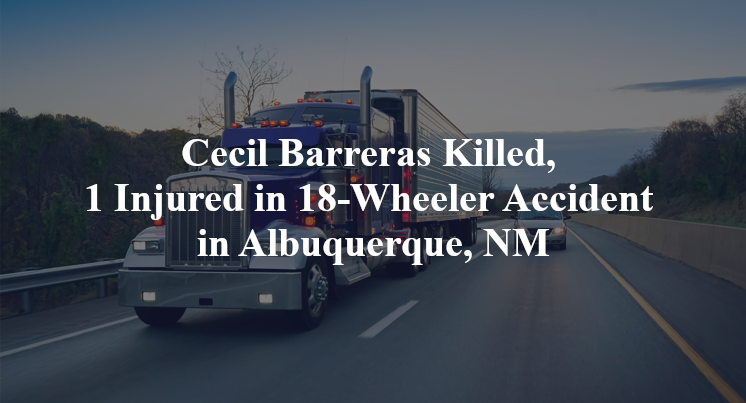Cecil Barreras Killed, 1 Injured in 18-Wheeler Accident in Albuquerque, NM
Update (October 3, 2025): One of the drivers injured in this crash has died, according to authorities. Albuquerque resident Cecil Barreras, 61, died from injuries suffered in the crash, when his 1958 Chevrolet Impala became trapped under a semi-truck, authorities said.
Albuquerque, NM — July 20, 2025, two people were injured following an 18-wheeler accident that occurred at around 8:00 a.m. on Interstate 40.
According to reports, a three-vehicle crash involving an 18-wheeler occurred along the westbound lanes of Interstate 40 near Rio Grande NW and resulted in two people from separate vehicles becoming entrapped.

When first responders arrived on the scene, they found one vehicle pinned under the semi and on fire, and they were extricated and transported to the hospital along with an occupant from the second vehicle. The condition of the motorists are unknown, and officials have not released an update on the status of the investigation, or what caused the collision.
Commentary
When a crash ends with one vehicle pinned beneath an 18-wheeler and on fire, people understandably want answers—not just about what happened, but why. The reports say this was a three-vehicle collision on westbound I-40 near Rio Grande NW, and that two people had to be rescued and taken to the hospital. But so far, there’s no word on how the crash unfolded, what led to the fire, or whether the truck driver played any role in what went wrong.
These are exactly the kinds of cases where early assumptions can be dangerous. Depending on how the vehicles were positioned, this could have been the result of the 18-wheeler losing control and running over a smaller vehicle—or the smaller vehicle might have struck the truck in a way that caused it to roll over it. Without knowing who hit whom and in what sequence, there’s no way to know who’s at fault. That’s why these investigations must go well beyond surface-level reports.
Key evidence will come from the truck’s engine control module (ECM), also known as the black box. That can tell us whether the truck was speeding, whether it braked before impact, and what its movements looked like in the seconds before the crash. Investigators should also preserve any dashcam footage, whether from the truck or from other nearby vehicles. Phone records may also reveal whether distraction played a role.
I’ve handled cases where a passenger vehicle tried to merge in front of a semi without enough space and ended up being run over—something that looks from the outside like the trucker’s fault, but wasn’t. I’ve also seen the opposite: trucks following too closely at highway speeds and running right over a stopped or slowing vehicle. Each scenario demands a different response—but the truth only comes out when the right evidence is secured.
In multi-vehicle crashes, there’s also the possibility that a third driver set everything in motion, and the trucker and another motorist were simply caught in the chain reaction. Without clear statements from all drivers and passengers, along with forensic vehicle data, the risk is that people blame the wrong party—or fail to hold all responsible parties accountable.
Key Takeaways:
- Authorities have not yet explained how the crash occurred or which vehicle caused it.
- A vehicle was reportedly trapped under the truck and caught fire, but the sequence of events is unclear.
- ECM data, dashcams, and phone records are critical to determining what actually happened.
- Multi-vehicle crashes often involve a chain of events that require careful reconstruction.
- True accountability depends on evidence, not assumptions about vehicle size or damage.

“These are essential reads for anyone dealing with the aftermath of a truck wreck”– Attorney Cory Carlson